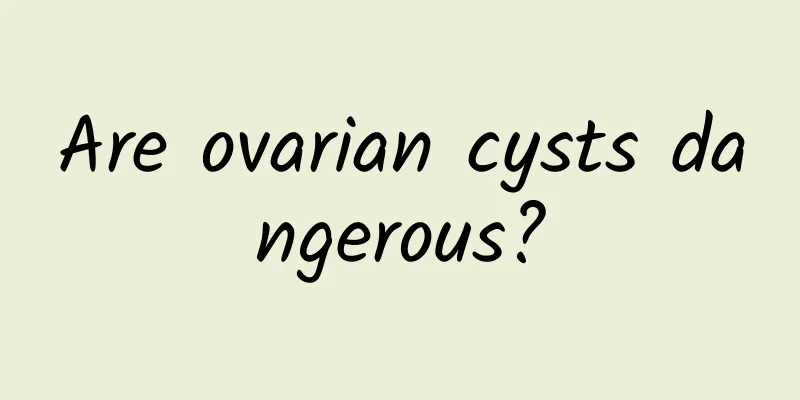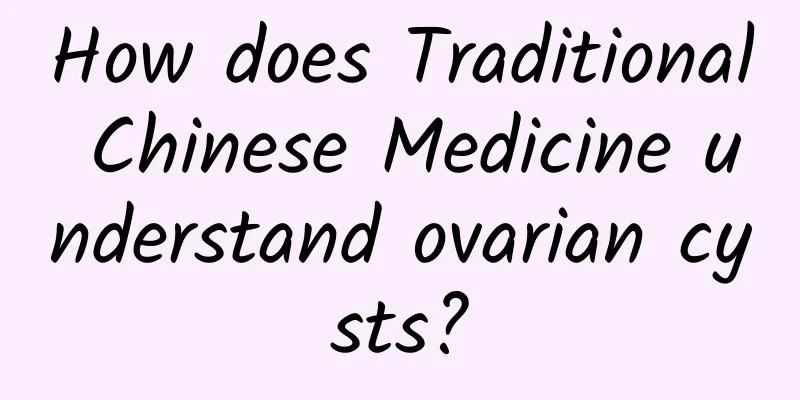Are subserosal uterine fibroids serious? What are the hazards of subserosal uterine fibroids?

|
The symptoms of subserosal uterine fibroids are not very obvious, but the harm to women cannot be ignored. So, are subserosal uterine fibroids serious? Subserosal uterine fibroids refer to most of the fibroids that grow and protrude on the surface of the uterine serosa, accounting for about 20-130% of fibroids. Subserosal uterine fibroids refer to most of the fibroids that grow and protrude on the surface of the uterine serosa, between the subserosal uterine fibroids and the muscle wall. Small fibroids have little effect on women's menstrual changes and are difficult to detect. Some subserosal uterine fibroids do not have obvious symptoms until they grow larger, so it is difficult for many people to discover the disease themselves. The hazards of subserosal uterine fibroids include: 1. Fibroids growing in the lumen of the fallopian tube can stretch and twist the surface of the fallopian tube, squeeze the lumen, affect its patency, or displace the ovary, expand the distance between the ovary and the fallopian tube, and hinder the egg retrieval function of the fallopian tube fimbria. 2. Uterine fibroids can make the frequency, range and duration of uterine contractions higher than the normal baseline, interfering with the implantation of fertilized eggs or causing miscarriage after implantation. When fibroids are accompanied by uterine periosteal proliferation, it means that the ovaries do not ovulate. Fibroids cause uterine bleeding, infection, and blockage of fallopian tubes, which can cause infertility. Larger uterine fibroids deform the uterine cavity, which is not conducive to the passage of sperm, implantation of fertilized eggs and fetal development. 4. Uterine fibroids growing in the cervix can compress the cervical canal, obstruct the passage or change the direction of the cervix, moving it away from the semen pool in the posterior fornix, making it difficult for sperm to enter the cervix. 5. Uterine fibroids growing under the mucosa of the uterine cavity are like placing a spherical intrauterine device in the uterine cavity, which hinders fertility. The ischemia, necrosis and atrophy of the endometrium on the surface of the uterine cavity are also not conducive to the implantation of the fertilized egg. Fibroids that grow near the uterine horns can compress the opening of the fallopian tubes, causing blockage. |
<<: Is it serious to have a small uterine fibroid? How to use medicine for uterine fibroids
>>: What should I do if I have uterine fibroids? Will uterine fibroids recur?
Recommend
Clear "garlic" fatty liver! People with qi deficiency should eat 10 grams of sweet and sour garlic every day.
Garlic has been in abundant production recently a...
A brief discussion on the causes of irregular menstruation
Menstrual irregularities in women are a very comm...
What is the difference between fungal infection and vulvar leukoplakia? Are fungal infection and leukoplakia the same?
Fungal infection and vulvar leukoplakia are two c...
How to pay attention to details to prevent dysmenorrhea
Dysmenorrhea is a gynecological disease, and many...
Western medicine treatment for menopause
There are several types of menopausal treatment d...
Uterine fibroids can become cancerous
Uterine fibroids are known as the "number on...
How to treat menopausal irregular menstruation? Doctors suggest improving it in these 5 aspects
Irregular menstruation is a common gynecological ...
What are the common causes of cervical hypertrophy?
The appearance of cervical hypertrophy is very ha...
How much does it cost to cure endometriosis?
As our living standards continue to improve, our ...
Does eating Zhou Hei Ya cause miscarriage? It is not advisable to eat too much
Can pregnant women eat Zhou Hei Ya? Does eating d...
3 dietary supplements for patients with ectopic pregnancy after surgery
After ectopic pregnancy surgery, the patient is w...
How to prevent Nabothian cyst attacks
How to avoid the occurrence of Nabothian cyst? Na...
Pay attention to the treatment of chronic cervicitis
What are the precautions for the treatment of chr...
The main clinical manifestations of irregular menstruation symptoms
Among the many diseases of gynecological inflamma...
Symptoms of bilateral adnexitis in women
Symptoms of bilateral adnexitis in women vary. If...









